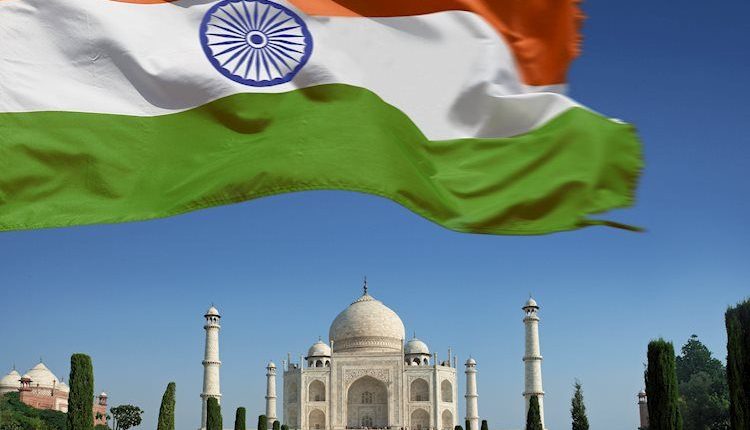- The Indian Rupee trades softer in Thursday’s early European session.
- High USD bids for month-end payments and uncertainties surrounding Trump’s trade policies undermine the INR.
- The RBI intervention might support the INR and cap the pair’s upside.
The Indian Rupee (INR) edges lower to near a recoed low on Thursday. The month-end US Dollar (USD) demand from importers weighs on the local currency. Additionally, the speculation over aggressive trade policies under Donald Trump’s presidency and the expectation that the Federal Reserve (Fed) might be cautious about further rate cuts could boost the USD against the INR in the near term.
On the other hand, the Reserve Bank of India (RBI) could step in to sell USD, which might help limit the INR’s losses. The US markets will be closed on Thursday in observance of the Thanksgiving holiday. Traders will keep an eye on the Indian Federal Fiscal Deficit for October and GDP growth data for the July-September 2024 quarter (Q2 FY25), which is set to be released on Friday.
Indian Rupee remains fragile due to Trump-related policies, Dollar demand intensifies
- “Rupee lost all its sheen it had gained on Wednesday and fell to 84.48 before recovering as RBI sold dollars… but dollars were bought again on account of month-end demand and it (rupee) closed lower,” said Anil Kumar Bhansali, Head of Treasury and Executive Director, Finrex Treasury Advisors LLP.
- Inflation in the US, as measured by the change in the Personal Consumption Expenditures (PCE) Price Index, rose to 2.3% YoY in October from 2.1% in September, the US Bureau of Economic Analysis (BEA) reported on Wednesday. This figure matched the expectation.
- The US core PCE Price Index, which excludes volatile food and energy prices, climbed 2.8% in the same period, compared to a 2.7% increase in September, in line with the market consensus. On a monthly basis, the core PCE Price Index increased 0.3% in October, as expected.
- The US economy grew at a 2.8% annual pace from July through September, the Commerce Department’s Bureau of Economic Analysis reported in its second estimate of third-quarter Gross Domestic Product (GDP).
- Futures traders are now pricing in a 66.5% chance that the Fed will cut rates by a quarter point in December, up from 55.7% before the PCE data, according to the CME FedWatch Tool. However, they expect the Fed to leave rates unchanged at its January and March 2025 meetings.
USD/INR’s constructive outlook prevails
The Indian Rupee trades on a weaker note on the day. The uptrend of the USD/INR pair remains intact within an ascending trend channel on the daily chart, with the price holding above the key 100-day Exponential Moving Average (EMA). The path of least resistance is to the upside as the 14-day Relative Strength Index stands above the midline near 58.0, indicating bullish sentiment in the near term.
The key upside barrier for USD/INR is seen at the 84.50-84.55 region, representing the all-time high and the upper boundary of the trend channel. Extended gains above this level could attract some buyers to the 85.00 psychological mark.
In the bearish event, any follow-through selling below the lower limit of the trend channel of 84.24 could expose 83.95, the 100-day EMA. Further south, the next support level emerges at 83.65, the low of August 1.
RBI FAQs
The role of the Reserve Bank of India (RBI), in its own words, is “..to maintain price stability while keeping in mind the objective of growth.” This involves maintaining the inflation rate at a stable 4% level primarily using the tool of interest rates. The RBI also maintains the exchange rate at a level that will not cause excess volatility and problems for exporters and importers, since India’s economy is heavily reliant on foreign trade, especially Oil.
The RBI formally meets at six bi-monthly meetings a year to discuss its monetary policy and, if necessary, adjust interest rates. When inflation is too high (above its 4% target), the RBI will normally raise interest rates to deter borrowing and spending, which can support the Rupee (INR). If inflation falls too far below target, the RBI might cut rates to encourage more lending, which can be negative for INR.
Due to the importance of trade to the economy, the Reserve Bank of India (RBI) actively intervenes in FX markets to maintain the exchange rate within a limited range. It does this to ensure Indian importers and exporters are not exposed to unnecessary currency risk during periods of FX volatility. The RBI buys and sells Rupees in the spot market at key levels, and uses derivatives to hedge its positions.
India has run a trade deficit for most of its recent history, indicating its imports outweigh its exports. Since the majority of international trade takes place in US Dollars, there are times – due to seasonal demand or order glut – where the high volume of imports leads to significant US Dollar- demand. During these periods the Rupee can weaken as it is heavily sold to meet the demand for Dollars. When markets experience increased volatility, the demand for US Dollars can also shoot up with a similarly negative effect on the Rupee.
Read the full article here

